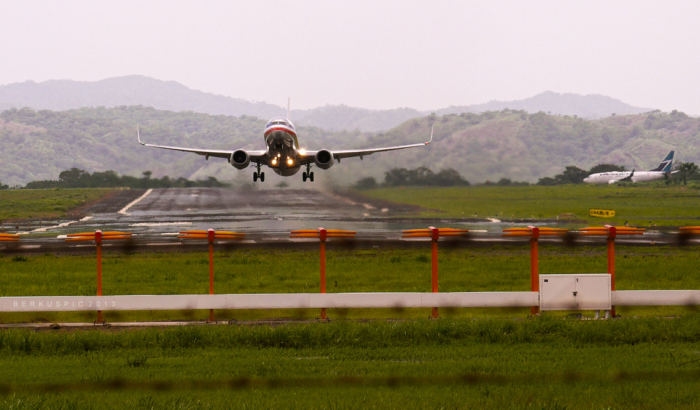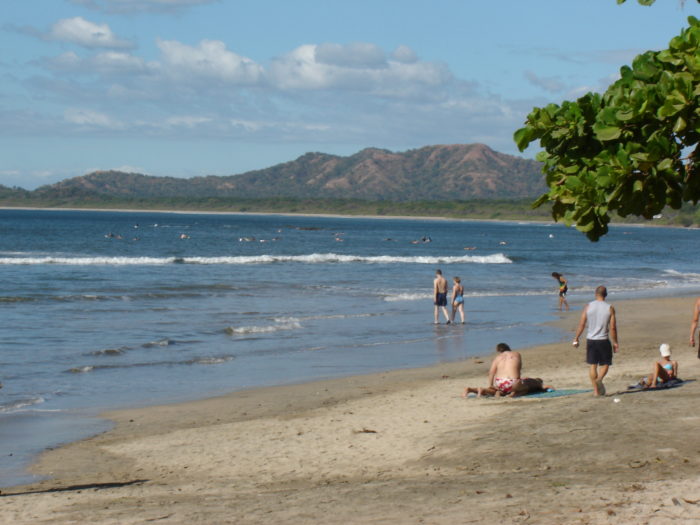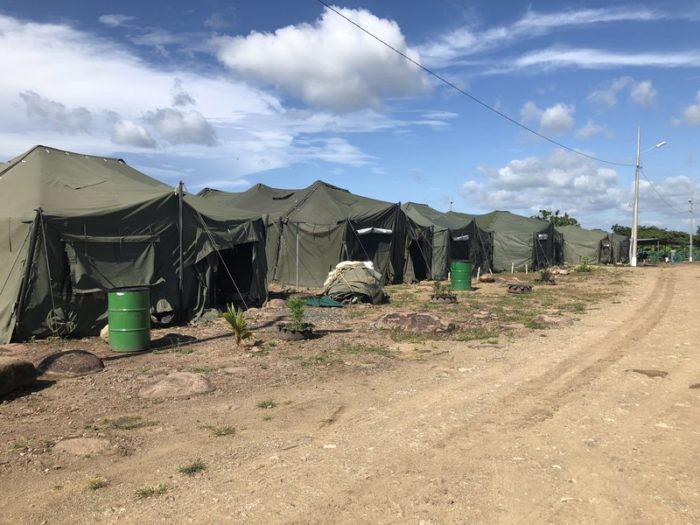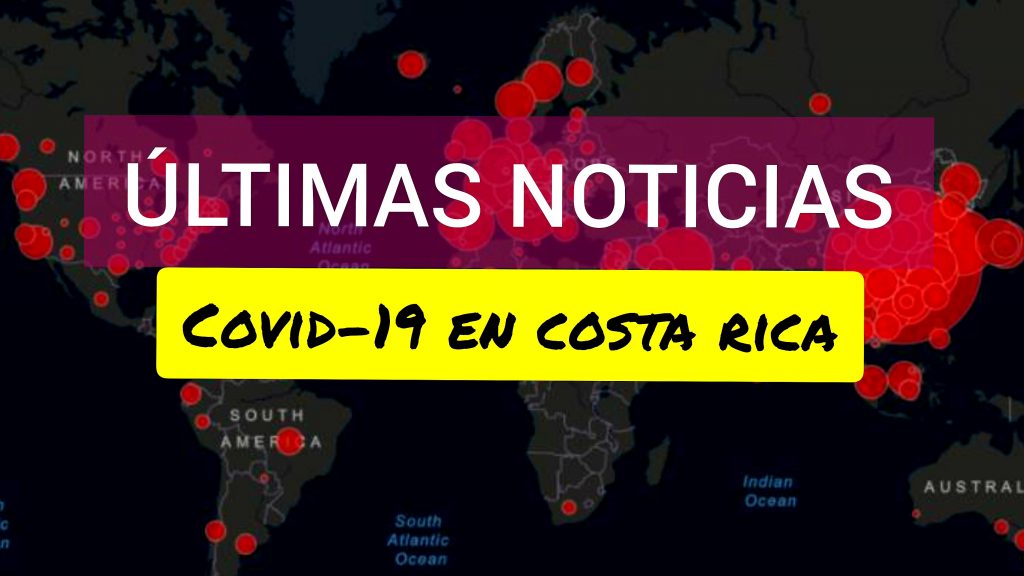‘Coronavirus will never hit Costa Rica. There are no direct flights between China and here’. These are the words that an acquaintance confidently shared just 7 weeks ago. Now, Costa Rica is practically in lockdown mode. Meanwhile, Ticos, like people in most other countries, are wondering when the COVID-19 pandemic will end and normality will resume.
I first grasped the severity of the COVID-19 pandemic a few weeks ago when I received a text from my mother, warning me of its dangers. At the time, COVID-19 was already spreading at an alarming rate in Britain, but it was yet to reach Central America. Many people in Costa Rica were relaxed. Some viewed the disease as a remote threat, something only the Chinese had to worry about. Others said that it would only be a matter of weeks before the virus hit their country. The latter were right.
Fast forward two weeks from then and Costa Rica saw its first confirmed cases, amongst them a 54-year-old Costa Rican doctor who had recently travelled to Panama and a woman from the United States who had arrived in San José without symptoms.
From peace to panic
When the first cases were confirmed, little changed. I have been living in Liberia, in rural Guanacaste, a region whose economy is almost entirely built on tourism. As the first confirmed cases were emerging in other provinces, we were in our ‘fiesta’ period, an annual celebration where people gather from far and wide to congregate on horses in the street, celebrate their heritage and, well, party.
Days after our local fiesta ended, fiestas were suspended nationwide. In fact, so were all large social gatherings. Football matches, theatre shows and even cinema screenings, I heard, were to be put on ‘behind closed doors’. Employees were also being encouraged to work from home. Despite this, the majority of Ticos remained calm and few made significant changes to their daily habits.
However, just a fortnight after the nation’s first confirmed cases, the government declared a national emergency. Now with 2 deaths and over 300 cases at the time of writing, schools are closed, supermarkets have makeshift barricades to control numbers and only Ticos/resident foreign citizens are being allowed into the country.
Already COVID-19 is having an impact on how Ticos are living their daily lives, but what will be the longer term consequences?
The future of tourism
First and foremost, economic difficulties are becoming increasingly evident. Already, many Ticos have lost their jobs or are being forced into unpaid leave, described as ‘vacation periods’, because their employers are unwilling or unable to keep paying workers.


I have seen this first-hand in Guanacaste’s tourism sector. The region’s international airport is now effectively closed for business, with only the occasional domestic flight arriving or departing. Eerily quiet with just a handful of staff, the international meeting point is a far cry from how it used to be. Just weeks ago, Tamarindo Beach was filled with tourists on vacation. Now, the beach is closed off and the tourists have gone home. Just weeks ago, Liberia’s Pulmitan bus station was full of backpackers mixed in amongst Ticos. Now, hardly anybody is around and there is an unnatural silence at times. Numerous, well-known hotel chains have laid off masses of workers, with some companies on the brink of closure. This is certainly not the Costa Rica Ticos have known recently.

As Marvin Barquero observed in 2017, the Costa Rican tourism sector has been growing steadily in recent years, thanks to the arrival of more flights and hence more tourists. A region as beautiful and fascinating as Guanacaste will eventually see tourists arriving again. But, even when the borders re-open, there may be a long delay before tourists feel secure enough to book holidays again.
As a result, it is difficult to say when the industry’s workers will find themselves re-employed or in a new role. Much of Costa Rica’s labour economy is classified as ‘informal’. This is particularly true of Guanacaste, as noted by Aurora Gomez Jimenez last year.
For now, economic uncertainty and household cutbacks are widespread across the region. As an English Teacher working out in Costa Rica, I have seen several students unable to continue with classes due to changing economic circumstances as a direct result of the pandemic.
I spoke with a former student who, up until recently, worked in hospitality for a large hotel chain. ‘People with seasonal contracts were dismissed without any kind of job security for the future and those with permanent contracts were given a vacation period. I feel positive but this generates fear as many of us depend on this employment’. He admits that he and his family will be economically affected now that they will have months without work. However, he was more concerned about the next time he could see his family, who live in a different province.
Economic Uncertainty
The economic uncertainty now affects the whole country. Responding to this, the government has put in place several rescue measures to reduce fear and inspire confidence. They have placed a 3 month freeze on the payment of VAT and custom duties and lowered the base lending rate.
This will inevitably set Costa Rica back in repaying its sizeable foreign debt, may dent confidence of both national and international investors, and could force a devaluation of the currency. Only last year, the leading economist Carl Weinberg said that Costa Rica’s ‘greatest economic risk was its external debt’. Ticos all around me, from all sectors, seem already to be economising, with the prospect of economic decline on the horizon.
For now, my interviewees have mixed feelings about the state of their economy as a result of COVID-19. Some are spending their days of reduced hours or unemployment to ‘relax’ and ride out the storm. ‘I am working reduced hours but I feel fine’, one of my interviewees shared. ‘My husband still has lots of work to do and I can relax a little more’.
Another former student was far more concerned about the economic impact the fallout from COVID-19 will have on his family. Temporarily dismissed from his full-time role as a driver for tourists, he will receive 50% of his salary for the next 3 months at least. He considers himself as one of the lucky ones as he will, at least, earn something, unlike many others. He and his family are already making changes, given that only he typically works: ‘Already, we are living differently and changing how much we consume. We are only buying food and cutting out unnecessary expenditures’. Clearly very concerned, he adds that not only Guanacaste but the whole of Costa Rica will be economically damaged, given the importance of tourism across the nation as a whole.
Will I still be a resident?
COVID-19 could also change how people are considered to be ‘resident’ in Costa Rica. The government has said that if foreign residents or refugees leave the country in this period, they will lose their immigration status.
Many refugees would lose a lot if they have to return home. I spoke with one Nicaraguan refugee who made clear his intention to stay. ‘How Nicaragua is dealing with COVID-19 is a joke’, he said. ‘Many people don’t know what the virus is there. The government say that people are dying of pneumonia, nothing more’. Refugees risk losing the relatively prosperous, secure life many have found in Costa Rica if they cross the border back to their own country. They may also run a greater risk of contracting the virus, especially if they return to Nicaragua, where the government appears to be in denial, encouraging residents of Managua to come out to sing and dance in the streets, and making minimal and tardy attempts to stem the spread of the virus.
The flow of immigrants from Nicaragua has also increased as conditions in the neighbouring country deteriorated. Between 2017 and 2018, the Costa Rican Directorate General of Migration and Immigration reported that Nicaraguan asylum applications in Costa Rica rose from 67 to 23,138 requests. That figure is suspected to be much higher now, but who knows how many Nicaraguans will return to their country in the midst of COVID-19’s turmoil?

Will foreign residents feel the same? Some may have to return to their home countries to support a sick relative or to care for family members. Returning perhaps would not cost them their personal safety and opportunities for a prosperous future. However, it could come at a great cost to their personal goals and careers. A migrant from the United States joked to me about returning to her native state of California. She said that it is highly unlikely that she will go back in this period, if she can avoid it. If she does so, her home and business in Costa Rica would be lost.
Perhaps the composition of Costa Rica’s population will change as a result of the pandemic. According to the 2011 Census, 9% of the population are immigrants. This figure has probably risen since then, given the increasing popularity of Costa Rica as a destination for US citizens to come to build a new life. Many will probably remain in the country during the pandemic, but it is difficult to say for how long COVID-19 will endure. As such, it is challenging to predict how many will stay put and retain their residency.
Looking on the bright side, but the future looks ominous
While confirmed cases and deaths from COVID-19 are still relatively low, Costa Rica may experience a more destructive epidemic than other countries. The nation relies on both its export industry and high numbers of foreign visitors to provide employment, both of which the virus is disrupting. Many Ticos are looking on the bright side, largely reassured by their government’s swift and focused response. However, current measures will hardly be adequate if the pandemic increases and persists.
Very large numbers work in or are dependent on Costa Rica’s famed tourism sector. Tourists will return. The government is asking people to postpone their trips, as opposed to cancelling planned vacations. However, it may take between 3-5 years before tourists flock back in sufficient numbers to allow those who have been dismissed to return to their employment. If even the UK government is struggling to support the self-employed short-term, how will a ‘middle-class’ economy like Costa Rica subsidise or financially assist those laid off in the longer term? Ticos are trying to stay positive, but how will they survive in the meantime?
Katie Jones lived and worked in Mexico as an English teacher in the state of Puebla. She is now teaching in Costa Rica and is an active member of a local NGO aiming to assist the quality of education for children in an underprivileged barrio. She is the Ambassador for Education for Central America and Mexico for the International Fellowship of Rotarian Educators.

